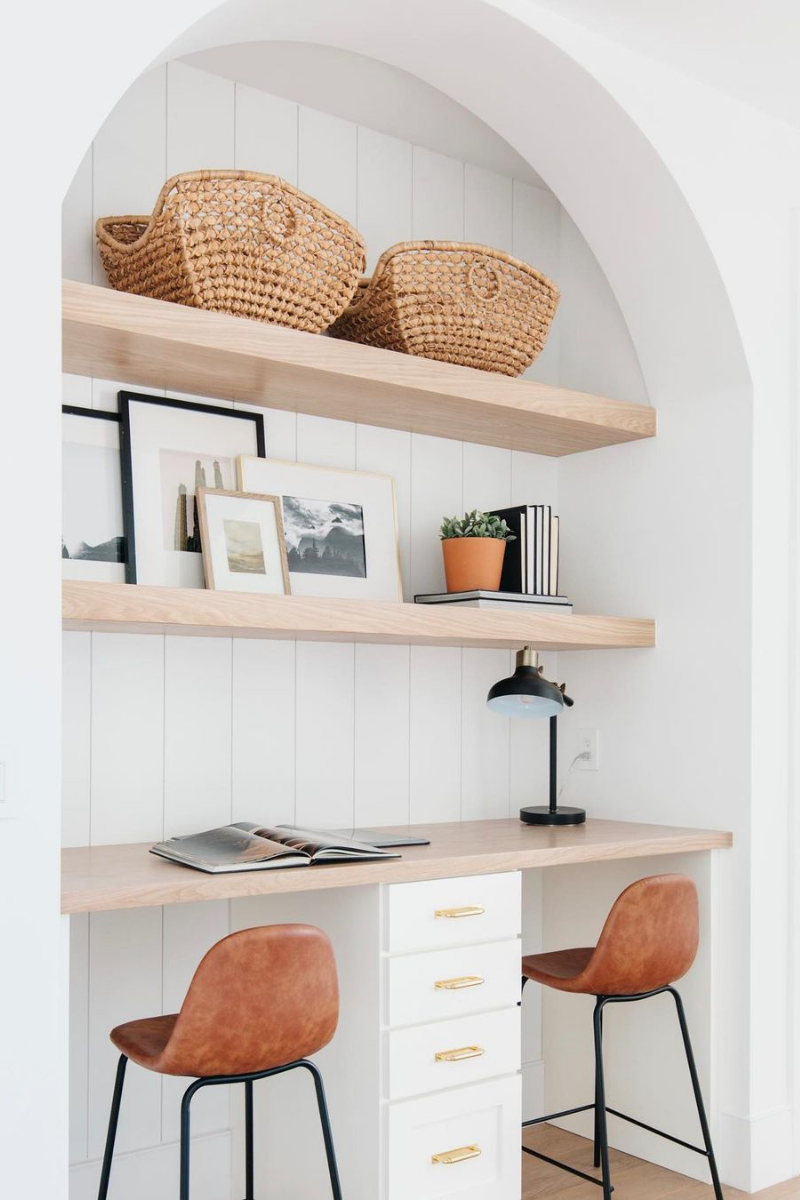
Image: gather projects
We’re several months into the school year already (OMG!), which means two things….
- It’s nearly Christmas!!!!!!!!!…and
- Parents are seriously losing their sh*% while they struggle to make sure their little one’s education doesn’t suffer while being schooled (largely) at home, and simultaneously attempting to get in a full day’s work (as if that’s really happening…rofl)
Many of you following us from afar may be surprised to learn that our Arctic region of Canada (Nunavut) only recently got its FIRST case of Covid-19 in November 2020. That’s pretty astounding considering how far reaching and easily contractable it has been. Nevertheless, we’re now having to go into a more restrictive way of living – like the rest of the world – wearing masks, limiting interactions as much as possible, and closing schools. Ugh.
With that, I know many of my fellow Arctic parents are struggling with homeschool and that transition is not easy. So, I decided to share some helpful home-school space planning ideas for your kids, with some tips and tricks that are both stylish and budget-friendly, along with links to all my favorite products (available in Nunavut/Canada).

Image: table for 5 please
1) DEFINE A SPACE
First things first. Not everyone has the luxury of having a separate room in their home that can be converted into a dedicated schooling space (i.e. a former playroom, basement, etc.), – but that’s totally fine! Having a dedicated space for the kids to use is ideal, but not a necessity, as long as you can define a space for them that is dedicated to their learning at set times. So if the dining room, countertop, or even a hallway closet can be used for parts of the day by them, then that will work just fine as long as it houses all of their essentials.

Image: IG @lynnettehartley
Interestingly enough, scientific studies have shown that rooms with higher ceilings increase creativity and students actually learn more. So keep this in mind when choosing the right space for them to learn, and consider opting for the high-ceiling dining room, over the short play-room in the basement. They’ll thank you later.

Image: @laurajamesphoto
2) REMOVE THE CLUTTER + ORGANIZE
Begin this step by removing anything that isn’t necessary for your child’s learning (especially their toys!). Having their learning space fairly minimalist will keep their mind clear and free of distractions, hence making it easier for them to learn. There are already so many distractions while homeschooling, so try and make it as easy as possible for them to adjust and focus.
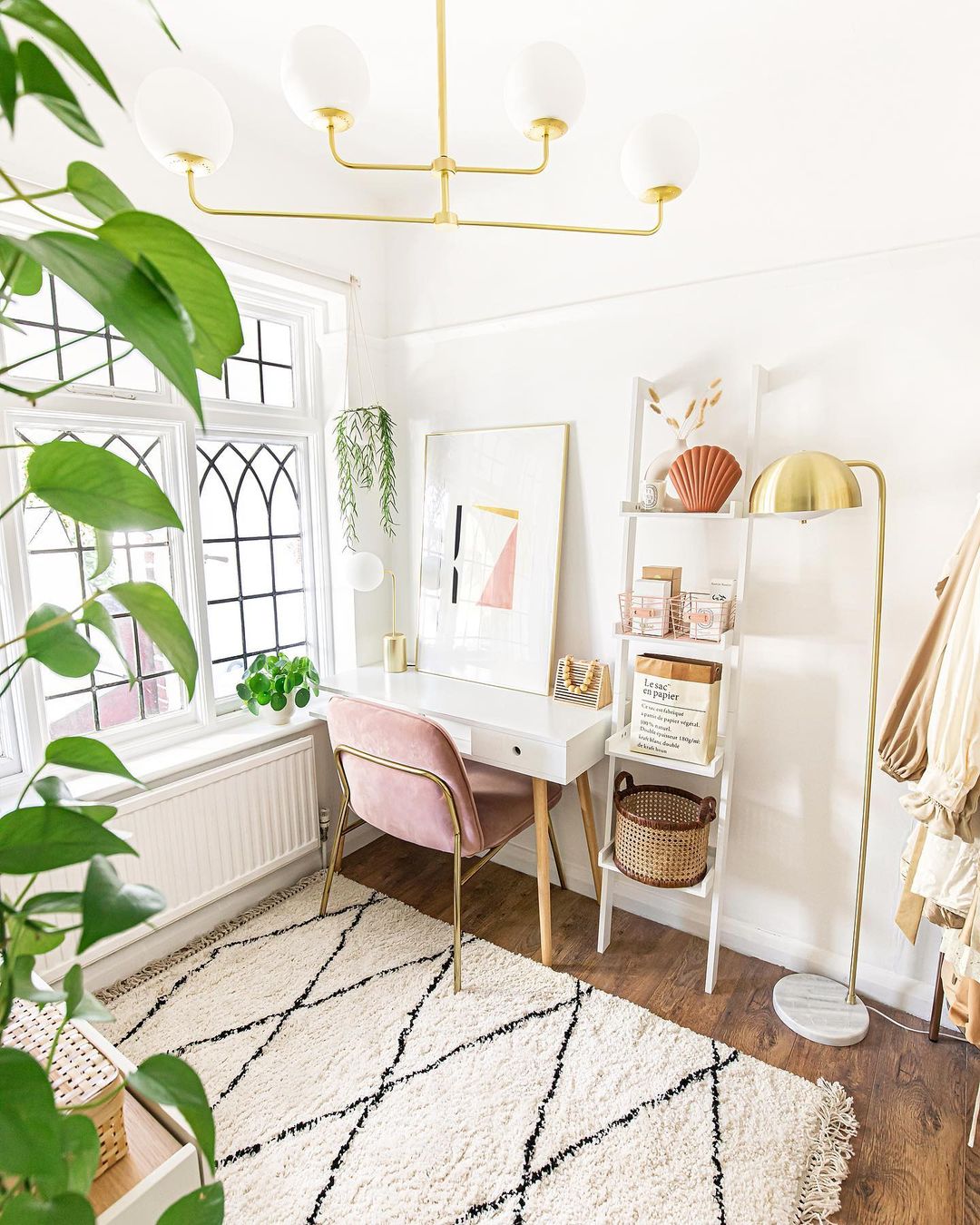
Image: home with kelsey

Image: cozy happy home
To best organize the space, consider an affordable option like the IKEA KALLAX Shelf Unit with labelled storage bins so that everything has a place (but is still accessible and not hidden away). For ULTRA space-saving, consider storing their stationary and craft supplies in a door shoe organizer (like the one shown below) so they’re easy to see, access, and hide away when not in use.

Image: A Bowl Full of Lemons
Tools such as glass jars, art caddies/rolling carts, magazine holders, paper storage boxes, file boxes, bins and totes for stationary, books, and other supplies are great options like the ones shown below from the ladies over at The Home Edit. Clear and colour-coded storage is highly recommended for children whenever possible to reduce time spent searching for supplies. Lided storage boxes like these are especially handy, and can be used to store flash cards, crayons, and other bits and bobs.
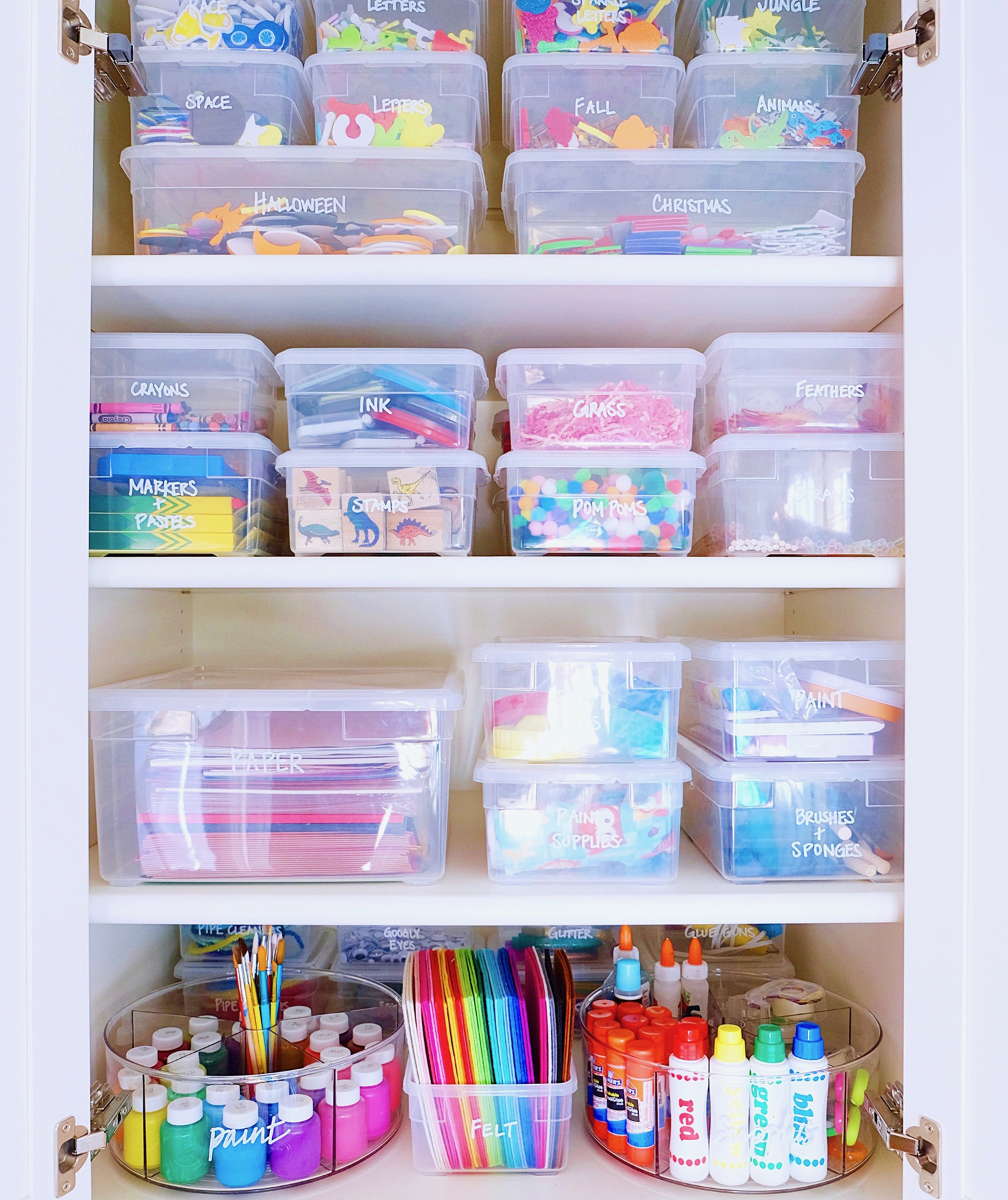
Image: The Home Edit
When you’re finished organizing your space, don’t forget to label EVERYTHING so that they can easily find what they’re looking for and return items to where they belong. My go-to label makers are a digital Brother P-Touch and a classic embossed DYMO label maker, which also comes with colourful labels so you can colour code your bins too (for the ultra organized kids!).
3) MOVEABLE STORAGE
Having rolling storage can be the perfect solution for most family homeschooling needs. A caddy that is dedicated to each child will ensure they each have their own storage space with everything they need for their specific classes readily at hand, and not mixed up with their siblings’ things. This can be extra useful in transitional spaces like a dining room, where the cart can be brought out during the day for class and then tucked out of site in the evening when the family needs to use the space for dinner or other purposes. Transitional spaces don’t have to be chaotic or risk getting overwhelmed with clutter when you homeschool, as long as you have a dedicated space for all of their supplies.
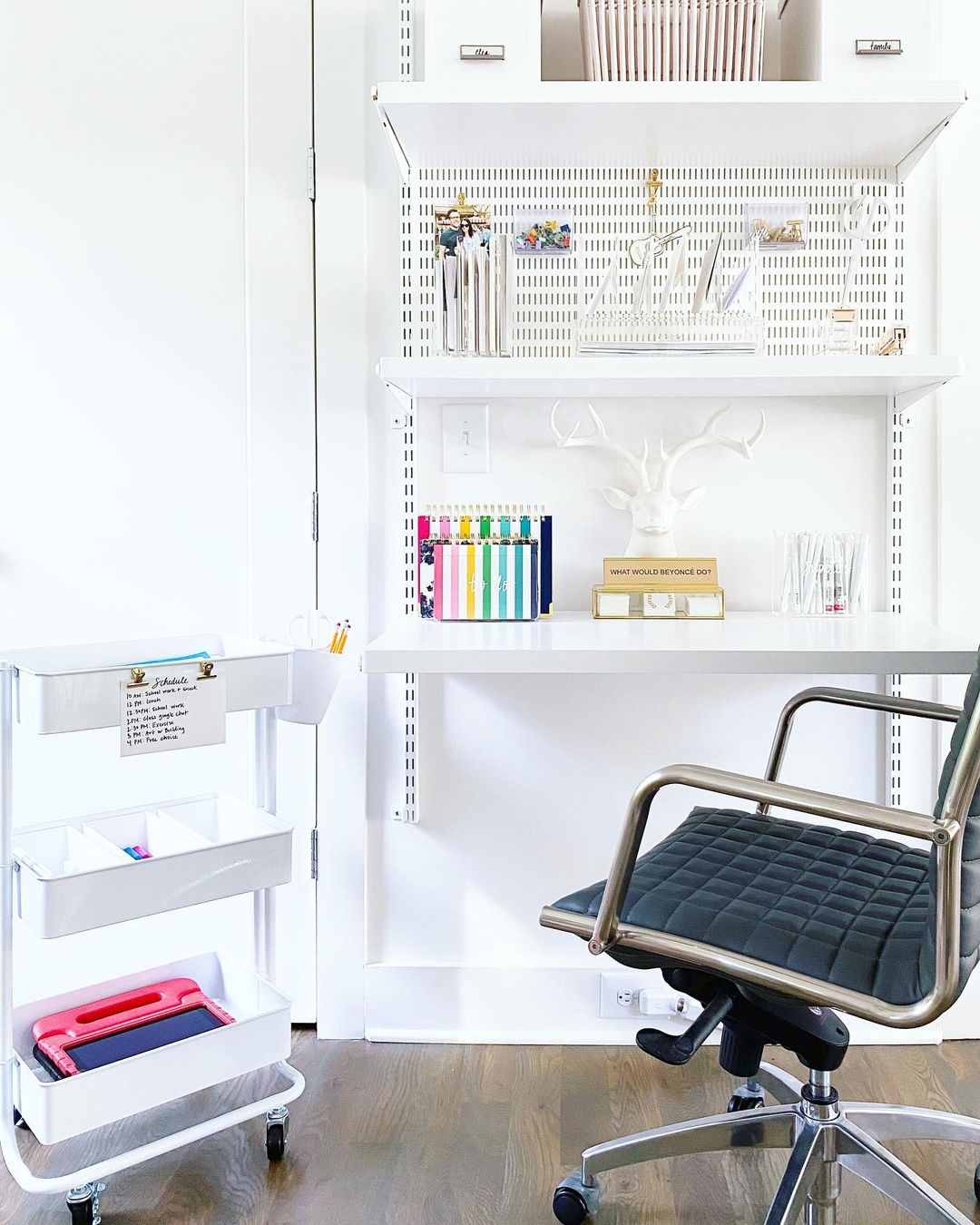
Image: The Home Edit
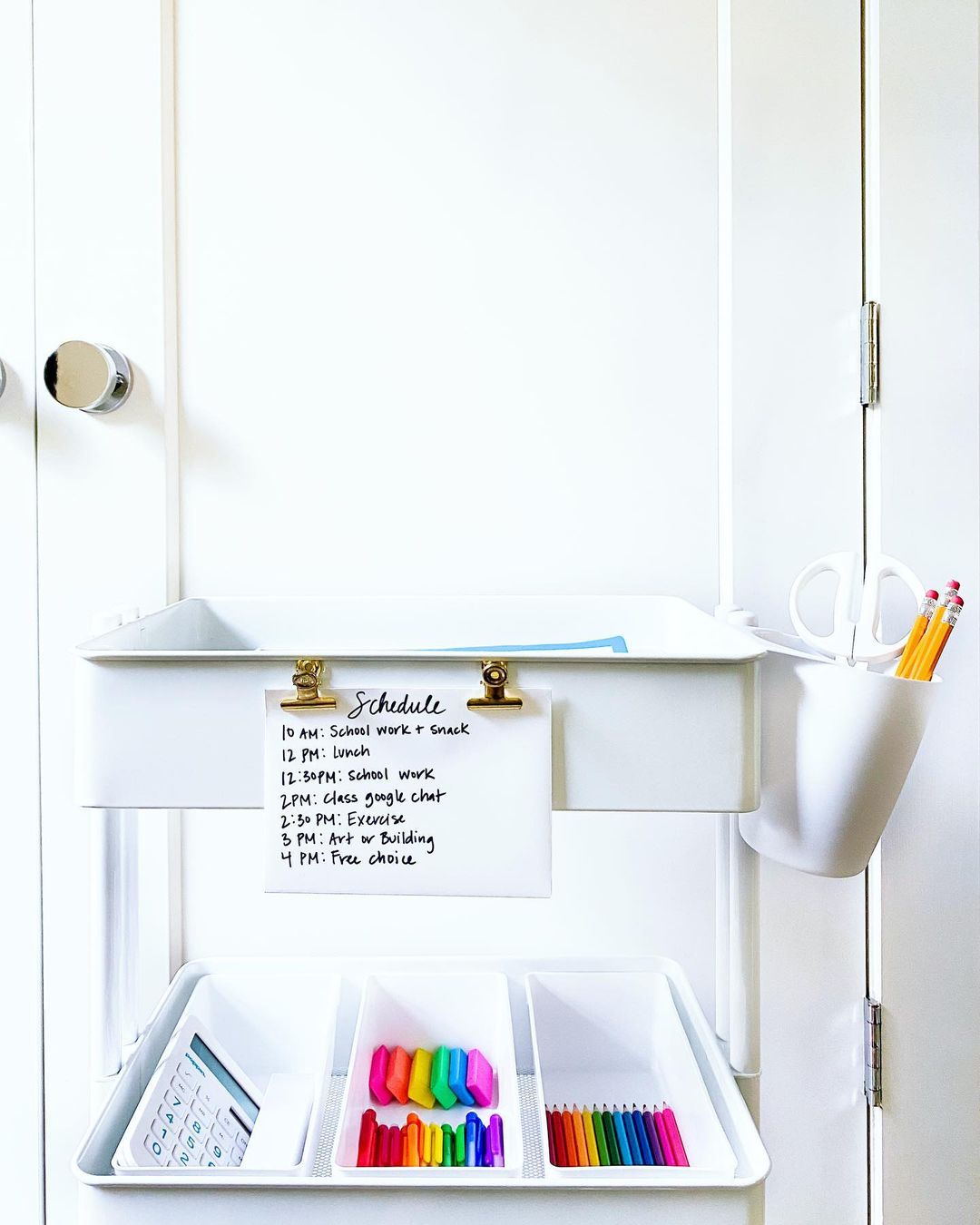
Image: The Home Edit
4) NATURAL SUN LIGHT + QUALITY AIR
Let the beauty of the outdoors fill their learning space as much as possible. Studies have shown that exposure to natural light improves student test scores and behaviour. With its profoundly positive impact on mental health, physical wellness and academic performance, prioritizing your child’s learning space that is close to a window or naturally lit space it ideal. If you’re in the Arctic with limited sunlight this time of year, you may also want to consider a SAD (Seasonal Affective Disorder) lamp, for a bit of light therapy to keep their spirits up – my all time favorite is this one by Verilux.
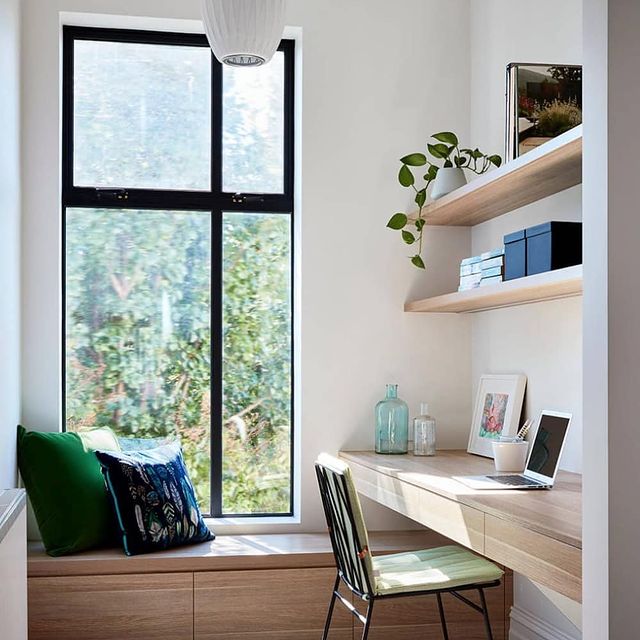
Image: intentional workspaces
Improve air quality by placing plants, humidifiers, air filters, and/or essential oil diffusers in the room. Aloe Vera, Areca Palm, Elephant Ear Philodendron are a few of the better air-improving species. If you’re willing to invest the extra $$ into an AMAZING humidifier, I HIGHLY recommend the Dyson Humidifier, that not only looks good, but self-cleans, covers a huge area, and is super duper quiet. Lastly, my go-to essential oils for winter are Saje Wellness ‘All The Feels’ and The Yukon Soaps Company ‘Petals’.
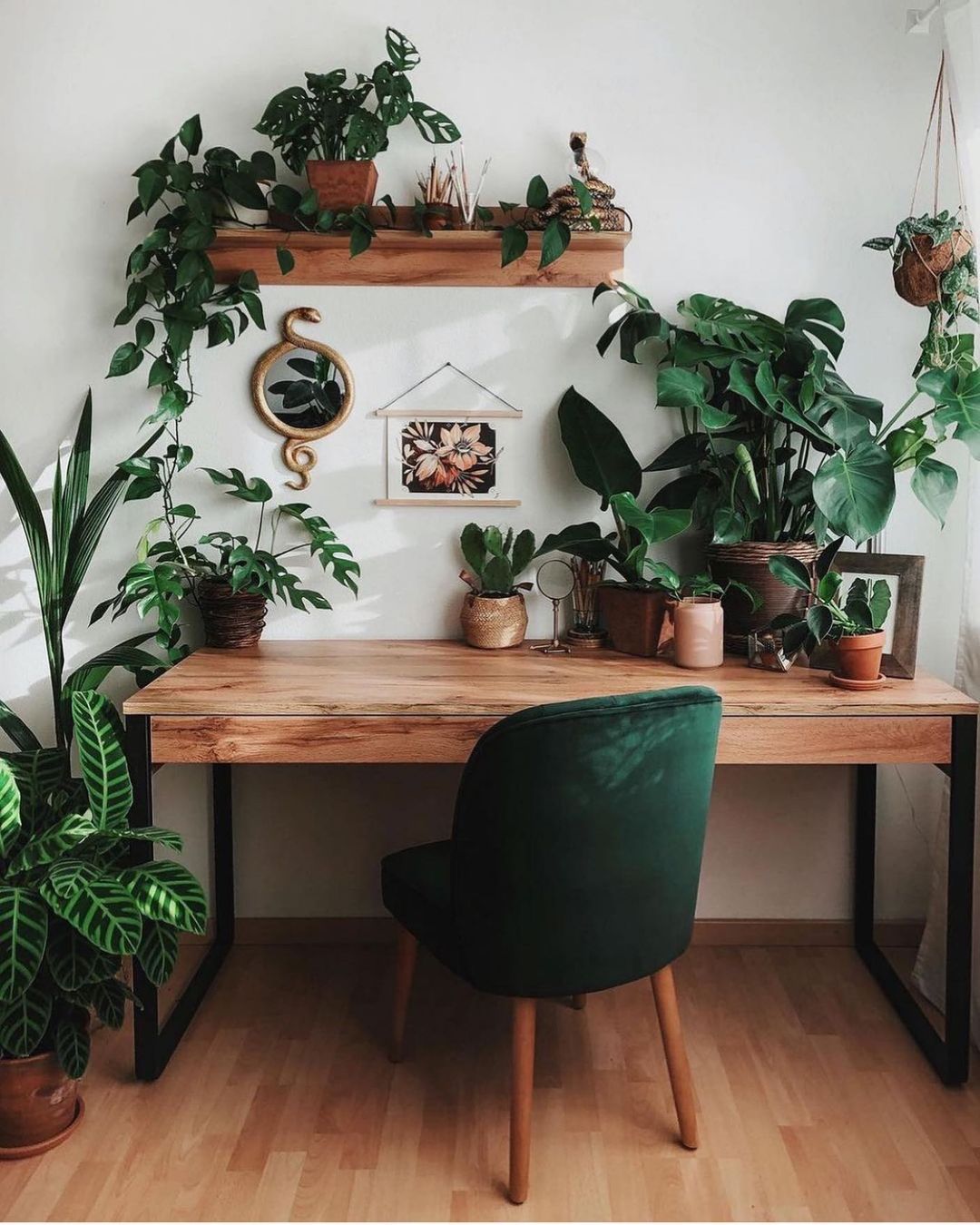
Image: leaf and pot
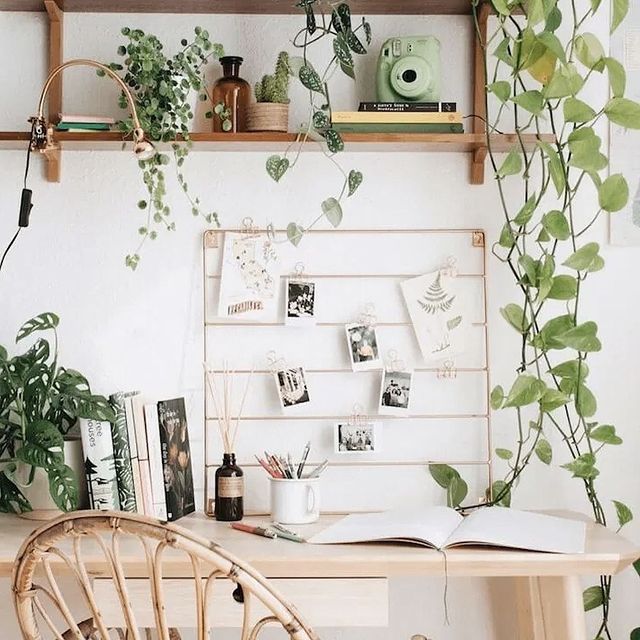
Image: ceremonia shop
5) YOU’RE NOT ALONE
We’re in this together! The stress and struggles you’re experiencing with homeschooling is being felt by millions of other families right now. You are doing the best you can and you don’t need to strive for perfection – just surviving with some semblance of sanity at this point will earn you 4 gold stars. Remember you are not alone and if you need any assistance, we are here for you, either virtually or in person, to take the stress out of planning your space.
Book a consultation with us to discuss how we can help you create the perfect homeschool space in your home.

Image: uberkid
